Dragonflies, all about this great winged insect
They are carnivorous predators that exercise a vital function in the ecosystem, as they ingest large quantities of mosquitoes, thus avoiding diseases such as yellow fever or malaria.
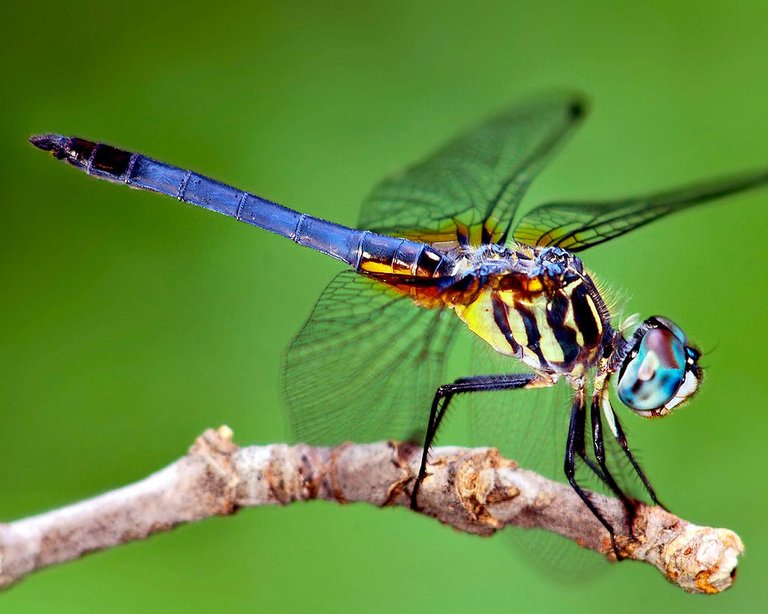
Without a doubt, dragonflies are the insects that have most fascinated and aroused the curiosity of human beings. They are the protagonists of numerous myths, beliefs and mythological stories that, many centuries ago, inhabit the popular imaginary. Next, we will learn more about this great winged insect and its meaning in our culture.

Dragonflies: outstanding morphological characteristics
Today, more than 5,500 different species of dragonflies are known. In addition, it is estimated that they may have first emerged more than 300 million years ago. This would mean that they predate human civilization and are older than dinosaurs.

They are characterized by their slender, elongated abdomen and large, globular eyes that barely touch each other. Their ocular morphology gives them a really privileged vision, whose visual field can reach 360 degrees.
Dragonflies have six legs, each covered with tiny hairs, which allow them to catch their prey. Their large and striking wings, which are four in total, can measure from two to 19 centimeters, varying according to the species.
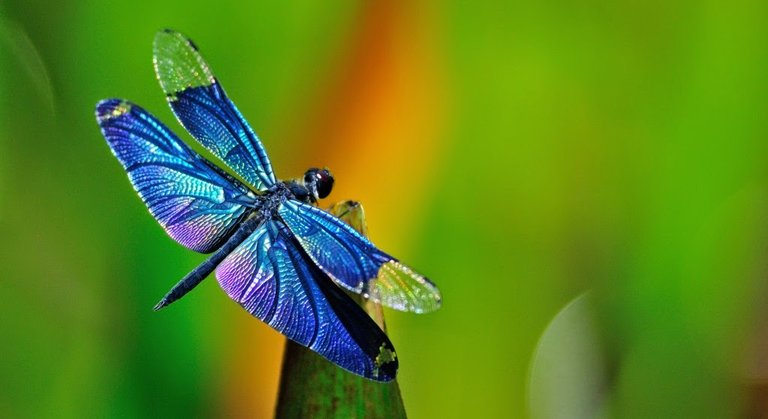
Food for dragonflies
Dragonflies are highly effective carnivorous predators, helping to control naturally the population of mosquitoes and other insects. They may be small, but they are exempt hunters who position themselves at the top of the food chain between insects. Thanks to their remarkable agility and the 'lint' on their legs, they trap small insects during their flight.

The role dragonflies play in their ecosystem helps humans enormously. A decline in the dragonfly population would be a risk not only to the balance of their habitat, but also to our health.

Habitat of dragonflies
The vast majority of dragonflies are native to warm climates, mainly tropical and subtropical regions. However, they can be found on all continents, with the exception of the North Pole and Antarctica. Moreover, the time they have been living on our planet is proof of their endurance and adaptation.
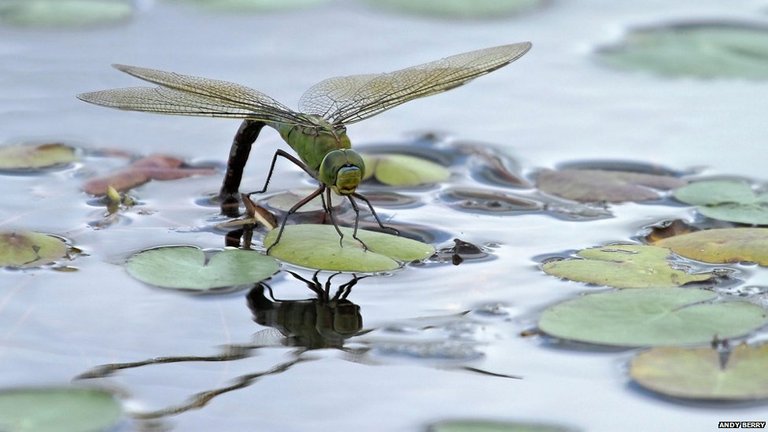
The flight of dragonflies
Dragonflies are also well known for their great agility and endurance in flight. They have small rings on their abdomen, which help them boost their own body, gaining power and speed when flying.
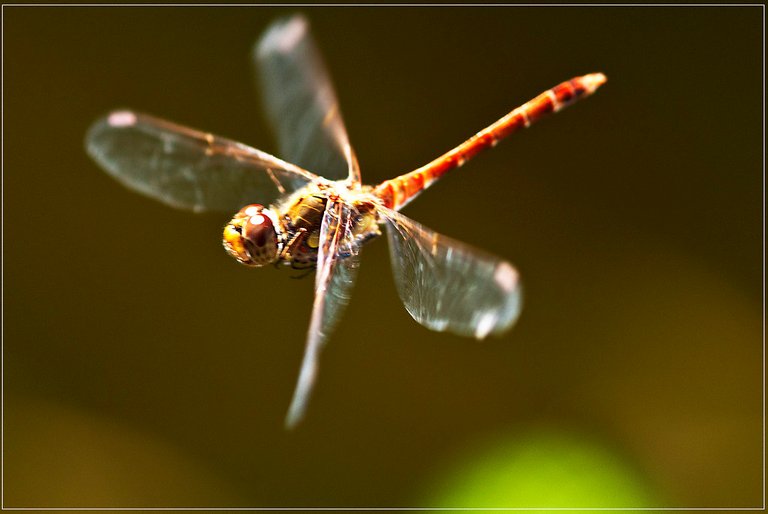
Their light and elongated body structure, together with their four powerful wings and rings, allow them to reach high speeds. A dragonfly can fly continuously for hours without decreasing an average speed of 60 km/h. In addition, they can fly quickly without needing any external impulse.
Reproduction of dragonflies
Dragonflies live much of their lives near water and that is where they form pairs to reproduce. In general, males must fight each other to 'conquer' the female in a territory. And after being crowned a 'winner', she must take care of her partner while she lays her eggs in the water.
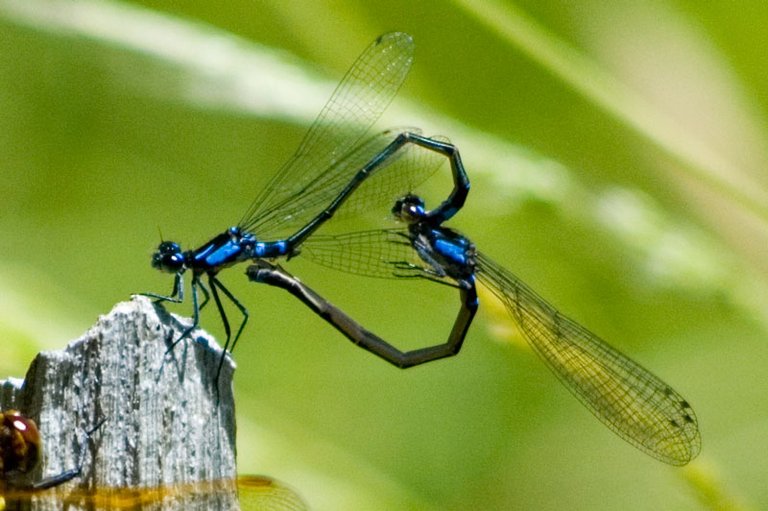
The life cycle of every dragonfly begins in water, in the form of an aquatic nymph. During this period, they breathe through gills and feed on worms and tadpoles.
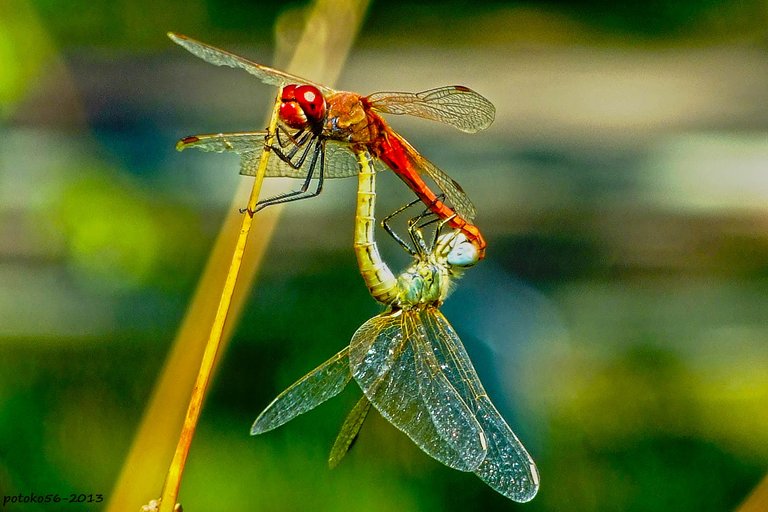
They also have a kind of mask with large tusks to catch their prey. The duration of the 'nymph phase' varies according to each species of dragonfly, from a few weeks to eight years.
Then comes the time for metamorphosis. After many moults of skin, they reach the form of an insect that they will adopt throughout their short adult life. To reach this stage, the dragonfly must get rid of the mask and tusks; most dragonflies live only a few weeks.
Dragonflies and their significance in popular culture
In the traditional native culture of the American continent, the dragonfly is considered as a symbol of transformation and rebirth. Therefore, they are often associated with reincarnation and the souls of the dead. There are also mentions of these insects as totems of strength and prosperity.
The Burmese people used to regularly perform the ritual of throwing dragonflies into the water surrounding their settlements. Today, it is estimated that the intention was to control the mosquito population and prevent the spread of diseases such as yellow fever or malaria; this ritual took a protective sense for the mythology of the native people.

In addition, its flight and the colors reflected in its large wings generated true fascination in many civilizations. And their ability to survive the transformations of life is considered an inspiration for human existence.
Thank you for reading 😊


If you liked reading this article, feel free to FOLLOW ME, UPVOTE and RESTEEM! It's always appreciated =D. Thank you all for your support and see you soon for the news flamingirl's adventures!


recently I saw a golden dragonfly, it was following me through the forest. Was amazing to see, almost landed on my hand.
Posted using Partiko Android
These insects are so fascinating! I think these are my favorites! Whenever I see one, I'm amazed!
nice . i love it